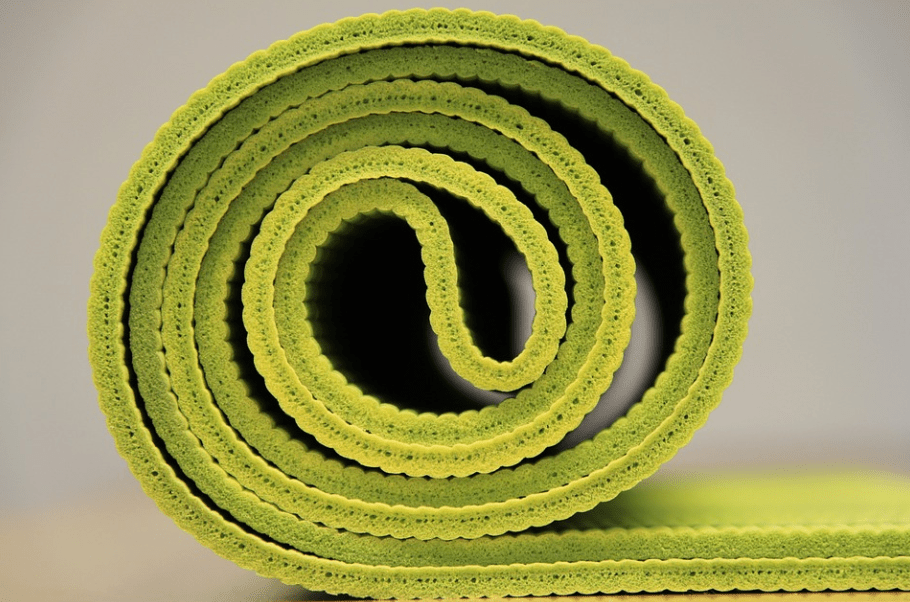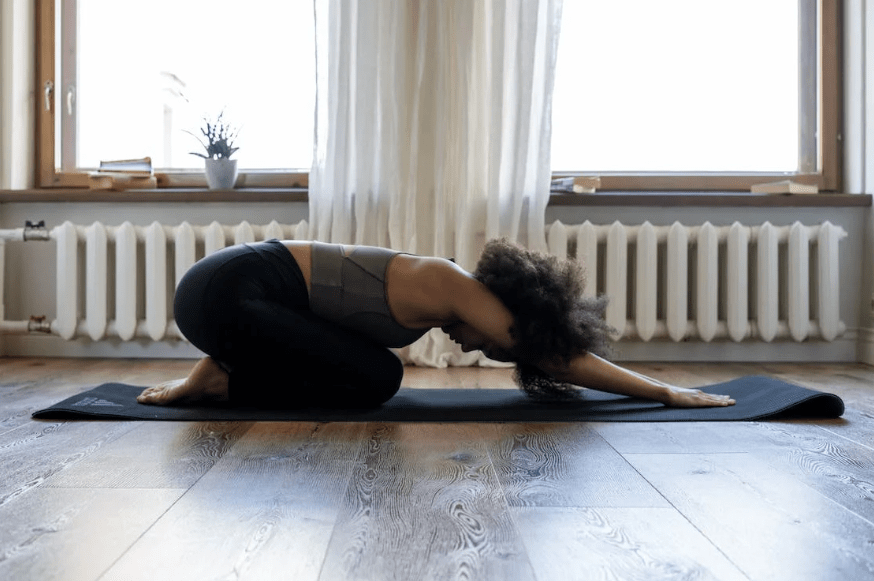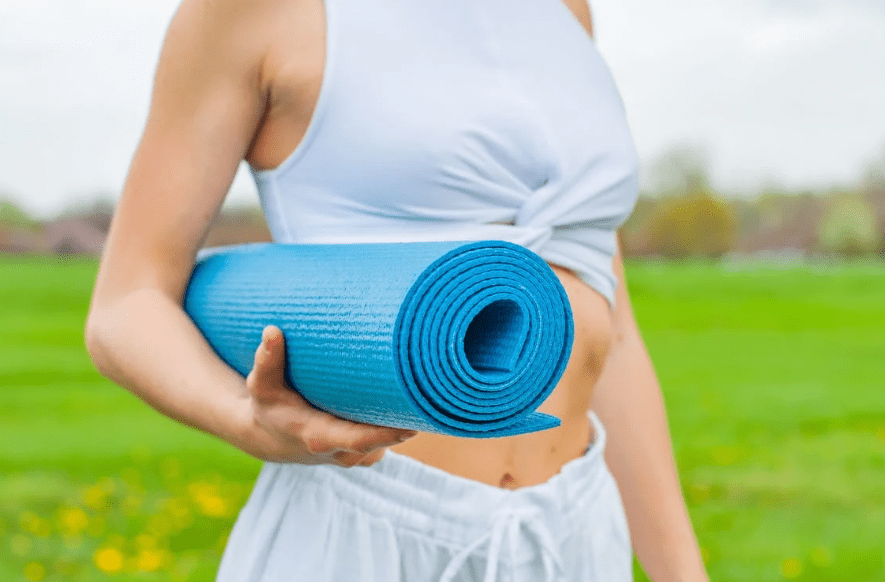In contrast to many other forms of physical exercise, yoga calls for comparatively few gear. While most yoga studios have the basics available, investing in a yoga mat can make your practice much more satisfying.
The original yoga mat was a far cry from the mats of today. Fifteen years ago, your only options were purple or blue versions of a single standard type made of PVC and notoriously sticky. There’s a yoga mat for you, no matter your specific needs.
As important as having a yoga mat that matches your taste in color and design, it is equally important that your mat be stable enough to support your body throughout your practice, compact enough to travel with, and soft enough to prevent injury. Each of these characteristics of your mat has its origins in its construction, including its thickness, materials, and surface texture.
In this guide, we’ll break down the various mat features so you can zero in on the ones most important to you.
The Advantages of Owning a Yoga Mat
It’s recommended that new yoga practitioners invest in their mats. If you have the space, it can serve as a yoga studio or personal gym, inspiring you to work out at home.
You can pick a mat just right for you in terms of comfort, weight, and body type, and it’ll be easier for your sanitation to use your mat. Having a mat that you enjoy looking at is a nice bonus.
Important Factors to Think About
As a beginner, it can be difficult to choose a yoga mat due to the vast variation available on the market. Mats come in a variety of materials, sizes, and thicknesses. Before settling on a mat, it’s important to consider the following factors.
1. Stickiness
You need a sticky yoga mat, so you don’t lose your alignment as you progress from pose to pose and hold poses for longer than a few seconds.
2. Thickness
When practicing balance poses, a thin yoga mat (approximately 1/16 inch thick) provides a firm footing on the floor. A thin mat has the disadvantage of not providing as much cushioning support.
When doing inversions, core work, or any other postures where your bones dig into the ground, a thicker yoga mat, such as one that is 1/4 inch thick, may be preferable for back support. The standard yoga mat is 3.3 mm (about 1/8 inch) thick and provides a comfortable middle ground.
3. Texture
The traction of the mat is determined by its surface texture. For those who sweat profusely during yoga class, a non-slip mat is an absolute must. If the uneven surface is bothersome, look for a mat with moisture management features.
4. Material
The texture, stickiness, sponginess, and eco-friendliness of a mat all depend on the material it’s made from. The following are the most common materials for a yoga mat:
5. Natural Rubber Yoga
These yoga mats are widely used because they are non-toxic and offer a comfortable density that is neither too firm nor too spongy. Since rubber is denser than PVC, thicker rubber mats will have more cushioning and comfort on hard floors. Rubber is also safe and biodegradable to use. It’s long-lasting and sturdy, and it provides a firm footing.
Rubber mats are highly recommended for hot yoga and other similar activities that will cause you to sweat heavily. The density of the natural ‘bounce’ material in rubber provides a good amount of cushioning. It’s also great for standing poses because it won’t move or slip even when your weight is distributed evenly across the mat, and you press down on the edges.
Balancing and standing poses benefit greatly from a mat that doesn’t compress or move erratically under your feet, and rubber is firmer than other mat materials. As the risk of injury increases dramatically with any sliding or shifting, maintaining stability on a yoga mat is essential. A rubber yoga mat will keep its shape and support your weight in any position, whether on your feet, elbows, knees, or head.
6. PVC Yoga Mats
One of the most common components of a yoga mat is polyvinyl chloride (PVC). It’s long-lasting, cheap, and simple to maintain.
Furthermore, PVC provides a great grip and can be placed on various surfaces, from hardwood to sand. It may even have a slightly sticky feel, which is ideal for enhancing grip.
Also, yoga mats made of PVC are incredibly lightweight and convenient to transport. The ability to easily carry twenty or more yoga mats to and from class is useful for any yoga instructor.
PVC provides a firm grip and instantly conforms to your hands or feet when you apply pressure. As a result, you won’t have to worry about slipping in any way.
Yoga practitioners who practice at home or yoga teachers who need to transport multiple mats at once will appreciate PVC mats’ portability and lightweight construction. PVC yoga mats are ideal for beginners and everyone wanting a mat you can use for various exercises and classes due to their low cost, high level of comfort, and excellent grip. Yoga practitioners of all skill levels, or anyone interested in performing floor exercises like sit-ups and planks, can benefit from a non-slip PVC mat because of its durability and water resistance.
7. PU Leather Yoga Mats
Even in extreme heat or when the practitioner and the mat are drenched in sweat, PU or polyurethane provides excellent grip. PU is hailed as a material with the flexibility of rubber and the strength of steel, and it also features high-density cushioning for added comfort. In addition to being eco-friendly, PU does not absorb heat easily, making it a good option for hot yoga or outdoor practice in the sun.
PU is water resistant, which makes it simple to wipe down, and it is also cruelty-free. PU is antimicrobial and highly resistant to slips, making it a great option for hot yoga and other vigorous styles like Ashtanga. PU is a great material for yoga mats because it is both tough and resistant to wear and tear from repeated use.
Style
When you’ve eliminated options based on their material, thickness, stickiness, and texture, all that’s left is to consider how they look. Choose whatever print, color, or pattern tickles your fancy.
There are a lot of different yoga mats out there, but the vast majority of them are suitable for use with any yoga practice. Ultimately, it’ll all come down to what you like best. However, by being aware of the differences, you will be better able to choose a mat that is ideal for your requirements.





